How to identify lawn weeds. This lawn weed identification guide includes images, common and scientific names and descriptions to help you with weed ID.
The guide is divided into three weed groups – broadleaf lawn weeds, grass weeds, and grass-like weeds – and then into subgroups based on the plant’s life cycle.
Photos, names and short descriptions are included in this lawn weed identification guide – just follow the links to the individual weed pages where you will find more images, detailed descriptions and weed control strategies.
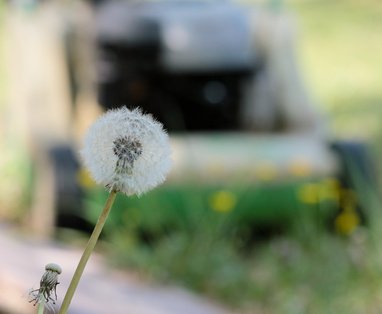
What we cover
ToggleWhy Should You Identify Weeds?
A good Integrated Pest Management plan for controlling lawn weeds starts by identifying the problem weed and then learning about its life cycle. When you understand how the weed grows and reproduces, you will be able to decide the best way to manage it.
The presence of certain weeds is an indicator of possible problems with your lawn. For example, prostrate knotweed grows and thrives in hard, compacted soils. Other weeds indicate your lawn is too wet, shady, infertile or thin. Identifying weeds and understanding how they grow will help you correct any problems with your lawn that encourage weed invasion.
There are hundreds of weeds that can invade a lawn – and weed types vary in different regions. This is a list of the most common lawn weeds. Are you looking for a lawn weed not listed here? Need help identifying a weed or want information about controlling a weed that is not listed here?
Lawn Weed Identification - Three Weed Groups
1. Broadleaf Lawn Weeds
Weeds that are not “grass-like” are referred to as broadleaf weeds. Examples include dandelion, clover, and chickweed.
Annual broadleaf weeds – Have a life cycle that lasts only one growing season. From seed germination to flower blooms to seed.
- Summer Annuals – Seeds sprout in the spring as soil temperatures warm. They flower, seed and die – at the first hard frost – in the fall. They are also called warm-season annuals.
- Winter Annuals – Seeds germinate in the fall, they survive the winter, flower and set seed in the spring and then die as the temperatures warm. They can also be called warm-season annuals.
Perennial Broadleaf Weeds – Produce vegetative structures that allow them to live two or more years – roots or stems that survive the winter.
- Simple Perennials – These weeds can live two or more years but are unable to produce new plants from vegetative structures.
- Creeping Perennials – Weeds that can survive the winter (overwinter) and produce new plants from vegetative reproductive structures.
- Biennial Weeds – Complete their life cycle over two growing seasons. Seeds germinate and the plants form a rosette the first year. The rosette bolts (meaning it sends up flower shoots), flowers and produces seeds in the second year.
2. Grassy Lawn Weeds
Grasses such as crabgrass, foxtail and orchard grass, create an uneven look to lawns and take resources from the desirable grass.
- Annual Grasses – Complete their life cycle in one growing season. Crabgrass and annual bluegrass are examples of common annual grass weeds.
- Perennial Grasses – Are capable of living two or more years.
3. Grass-Like Weeds
- Sedges – Yellow and purple nutsedge are the most common sedges that are lawn weeds. These plants are “grass-like“- but they are not grasses – they are part of the sedge family.
The best weed control is a thick, healthy lawn
Have you heard about the Sunday Smart Lawn Plan? It’s simple, do-it-yourself natural lawn care that’s customized to your soil, climate, and lawn. Delivered to you right when you need it.
Sunday’s plant and soil nutrient products are made from food waste, seaweed, and molasses. The natural additives stimulate plant growth and activate soil life.
This is Super Environmentally Friendly lawn care! Get a Smart Lawn and let Sunday help you keep the weeds out!
Broadleaf Lawn Weed Identification
Summer Annual Weeds
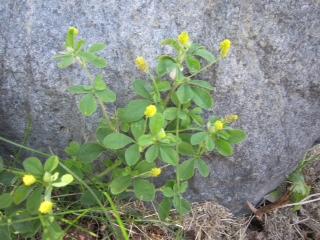
Black Medic or Yellow Trefoil Medicago lupulina L is a low-growing annual that resembles clover and is often confused with it. Easily identified by its yellow flowers and leaf arrangement.
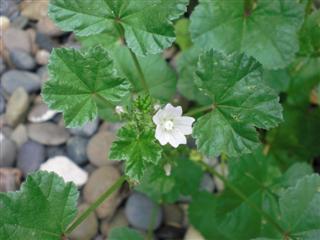
Common Mallow Malva neglecta Wallr. is often found in new lawns and gardens. And can be troublesome in gardens because it produces a lot of seeds. Its presence indicates fertile soils.
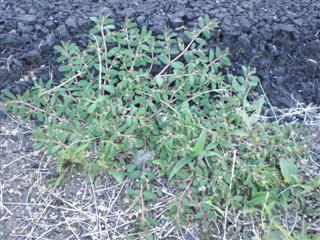
Prostrate Spurge Euphorbia supina Raf. is a low-growing summer annual. The leaves have a red blotch in the center and the stem oozes a milky sap when broken.
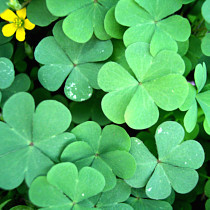
Yellow Wood Sorrel Oxalis stricta is commonly called Oxalis. Clover-like leaves, and small yellow flowers. Seed capsules resemble tiny cucumbers. A vigorous grower that thrives in fertile, warm, and moist soils. Red Sorrel looks the same but has red flowers.
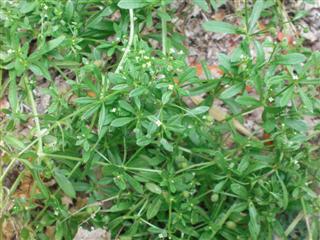
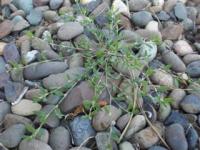
Prostrate Knotweed Polygonum aviculare is a tough weed that grows well in heavily trafficked areas with compacted soils. The branching stems form a dense mat that can be 2 to 3 feet wide. It has blue-green leaves.
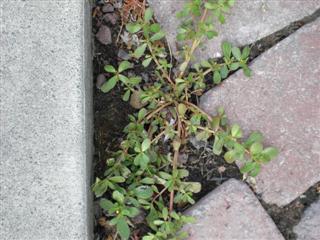
Purslane Portulaca oleracea L. A prostrate growth habit with fleshy stems and leaves. It is a vigorous grower in moist, warm, well-fertilized soils. It can be persistent in areas that are damp.
Winter Annual Weeds

Common chickweed Stellaria media L. is a creeping winter annual with tiny star-like white flowers. It germinates in fall or late winter.
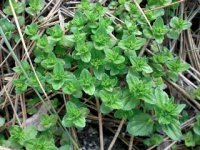
Corn Speedwell Veronica arvensis is a low-growing weed with tiny blue flowers. It commonly invades thin turfgrass stands, neglected lawns and newly seeded lawns. Corn speedwell is one of the most prevalent of the weedy Veronica species.
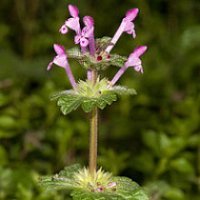
Henbit Lamium amplexicaule L. is a member of the mint family. Square stems and purple to pink trumpet-shaped flowers that bloom in the spring. Prefers moist fertile soils.
Perennial Broadleaf Weeds
Simple Perennial weeds
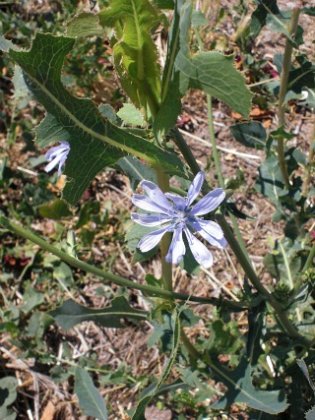
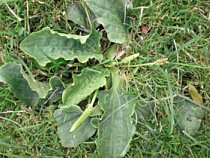
Broadleaf Plantain Plantago major Broadleaf Plantains can be found in thin lawns that need to be fertilized. Characterized by rosettes of rounded leaves and short seed spikes.
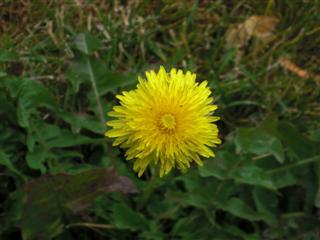
Dandelions Taraxacum officinale Dandelions are one of the most common lawn weeds.
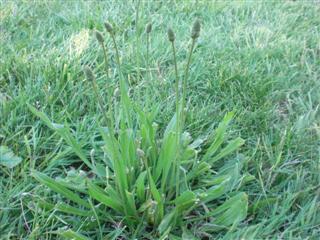
Buckhorn Plantain Plantago lanceolata has rosettes lance-like leaves and bullet-like seedheads on wiry-stemmed seed stalks. They are common in thin lawns with infertile soils.
Lawn Weed Identification
Creeping Perennials
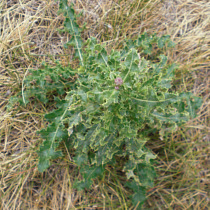
Canada Thistle Cirsium arvense also called Creeping Thistle, is a noxious weed found throughout the United States and Canada.
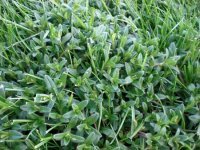
Mouse-Ear Chickweed Cerastium vulgatum indicates moist, compacted soils. It spreads by creeping stems and has a dense growth habit that forms patches in lawns.
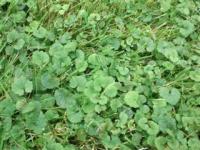
Ground Ivy Glechoma hederacea L. or Creeping Charlie is an aggressive lawn weed that is difficult to control when established in lawns. Its creeping stems will root at the nodes, forming new plants.
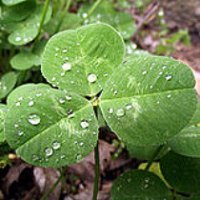
White Clover Trifolium repens L. competes aggressively with lawns. It used to be considered an important part of lawn seed mixtures – many people now consider it a weed.
Biennials
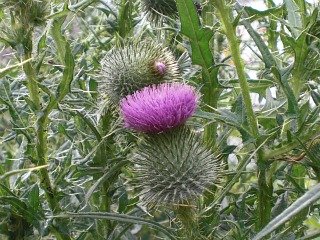
Bull Thistle Cirsium vulgare is a deep-rooted biennial. This weed is found throughout the United States. Primarily growing in pastures and roadside ditches.
Grassy Lawn Weed Identification
Annual Grassy Weeds
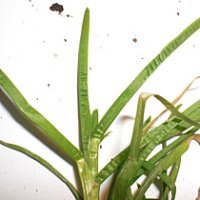
Annual Bluegrass Poa annua is a winter annual that grows vigorously in moist, cool, shaded conditions and tolerates compacted soils.
Perennial Grasses
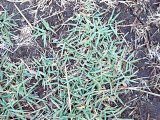
Bermudagrass or Wire grass Cynodon dactylon is a common weed of lawns, gardens, orchards and landscape beds. A very aggressive warm-season, perennial that is tough to control once it becomes established.
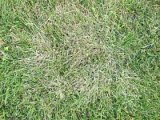
Smooth Crabgrass Digitaria ischaemum: Crabgrass is a warm-season annual grass, which means it sprouts from seed in late spring and summer and will die when the first hard frost arrives in the fall.

Hairy Crabgrass Digitaria sanguinalis: Crabgrass thrives on moist sites with plenty of sunlight. It will invade areas where your lawn is thinnest and along edges, curbs and sidewalks.
Grass-like Lawn Weed Identification
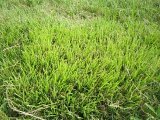
Yellow Nutsedge Cyperus esculentus (often called “Nutgrass”) gets its name from its yellow/brown seedheads and the tubers or nutlets that form at the tips of the rhizomes (spreading underground stems). The triangular stems grow upright and have glossy leaves that are a light green or yellow-green color and have a very distinct mid-rib.
